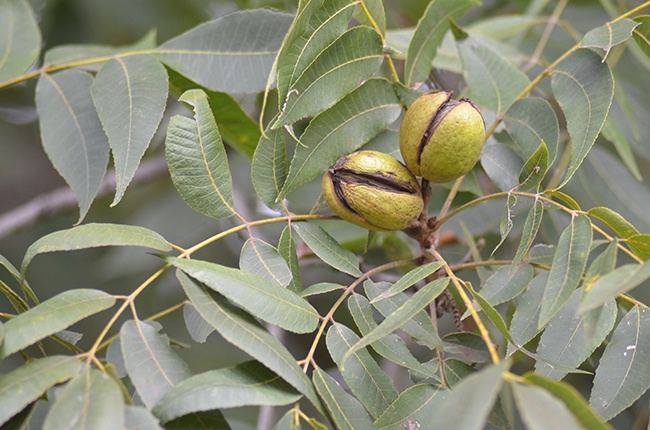Hurricanes may have taken a big bite out of the U.S. pecan crop this year, but that’s not likely to stop the annual fall flurry of pies, candies, cheeses and other delicacies made with the popular native nut, officials said.
As much as 35 percent of the Georgia crop totaling 35 million pounds was lost during Hurricane Irma, according to the U.S. Department of Agriculture. Hurricane Harvey took about 3 million pounds out of the Texas harvest.
But the USDA pecan report Oct. 3 indicated that shellers will start to get busy by next week as harvest picks up across the south and growers in storm-damaged areas continue to clear downed trees to access orchards.
“Harvest is underway, and we’re expecting a medium-sized crop in Texas,” said Monte Nesbitt, Texas A&M AgriLife Extension Service horticulturist, College Station. “Early price indicators are strong that demand is high, and supply is not as big as it would have been across the country.”
Nesbitt said the pecan is linked with fall and winter holidays because it is harvested at that time of year. But U.S. growers are planning to change the seasonal consumption phenomena through a new Federal Marketing Order, passed in late 2016, which will encourage year-round uses for the nut.
“Domestic consumption has been flat for decades in the U.S. People eat about the same amount of pecans they always have, and it’s not a lot,” Nesbitt noted. “We eat about a half pound per person per year, so there is a lot of room to increase that.”
Some growers have helped fund state-exclusive check-off programs for promotion and research but with marginal success, he said, and then a national marketing situation emerged.
What changed was China, which discovered the traditional southern U.S. nut several years ago and began importing pecans in large amounts, Nesbitt explained.
“But soon there was a fear in the U.S. pecan industry of what would happen if this lucrative, easy, change-the-game export market goes away,” he said. “What if China plants its own orchards? The U.S. industry realized the need to do more promotion domestically.”
To tackle that need, he said, growers decided to band together for a federal, unified promotion.
As a result of the Federal Marketing Order, U.S. pecan growers and processors created the American Pecan Council, based in Fort Worth, to promote the crop produced in 15 states from Florida to California.
The council’s website, https://americanpecan.com/, focuses on pecans being the only native American tree nut as a point of pride but also notes its health aspects. “Wholesome and homegrown” and “The Great American Pecan” are two of the messages portrayed.
Nesbitt said investors are taking note of the new national promotion effort and acreage is expanding.
“We look at this as a key change in the way pecan economics work,” Nesbitt said. “Other tree nuts have had promotional efforts and changed the way they were viewed and consumed in this country.
“The pecan is still a true supply and demand commodity. It is very much affected by supplies and is tuned to demand,” he said. “But what other nut crops showed in their promotions is that as acreage increases so does demand. This is an uptick in terms of how pecans will be marketed and sold and demanded in the future.”
That leads some to think about getting into the pecan business at this stage.
“We (AgriLife horticulturists) interact with people who want to get in on that,” Nesbitt said. “Our annual pecan short course, which has been taught in Texas for almost 60 years, is feeding that need.”
###
This story by Kathleen Phillips originally appeared in AgriLife Today.





